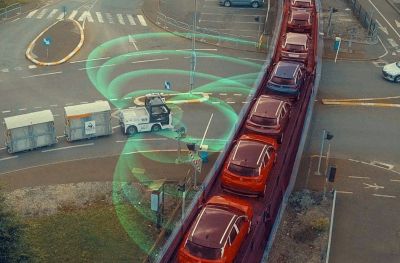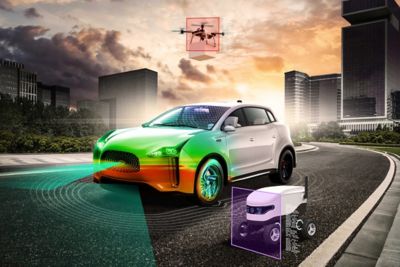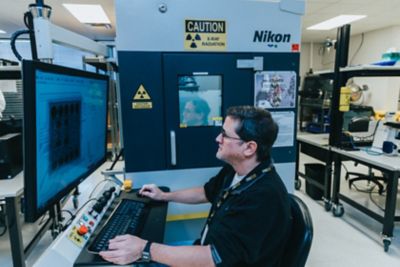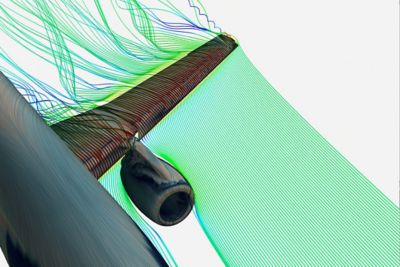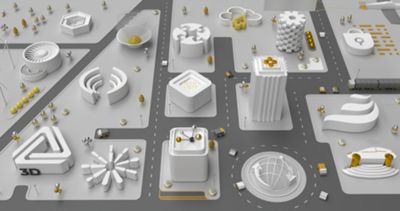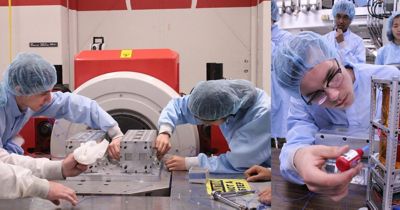-
United States -
United Kingdom -
India -
France -
Deutschland -
Italia -
日本 -
대한민국 -
中国 -
台灣
-
Ansys is committed to setting today's students up for success, by providing free simulation engineering software to students.
-
Ansys is committed to setting today's students up for success, by providing free simulation engineering software to students.
-
Ansys is committed to setting today's students up for success, by providing free simulation engineering software to students.
-
Contact Us -
Careers -
Students and Academic -
For United States and Canada
+1 844.462.6797

When cars run out of gas or charge, we simply drive to a gas station and fill them back up or plug them into a charger. Single-use vehicles would be wildly inefficient, costly, and unsustainable. Humanity probably wouldn’t be where it is today if all our cars and commercial vehicles were discarded after using up one tank of gas.
Yet satellite systems, which cost $100 million to $300 million on average and take years to develop, are all single use. Satellite lifetimes are set by the amount of fuel onboard when they leave the ground, even if the satellite itself is still in working condition. Once the satellite runs out of fuel, it either burns up in Earth’s atmosphere or is pushed into a graveyard orbit, which lies outside other satellites’ operational orbits, depending on its location. With about 2,600 objects launched into orbit in 2023 — and that number gradually rising every year — a lot of objects are competing for space.
To help the aerospace community make satellites more efficient and sustainable, Orbit Fab is creating the first commercial spacecraft refueling service. It aims to end single-use spacecraft and enable the next generation of missions based on extended satellite lifetimes and unlimited flexibility for maneuvering. Founded in 2018, Orbit Fab became the first private company to resupply water to the International Space Station (ISS), launched and tested the first fuel propellant depot, and has secured partnerships with other government and commercial customers to refuel their respective satellites in the coming years.
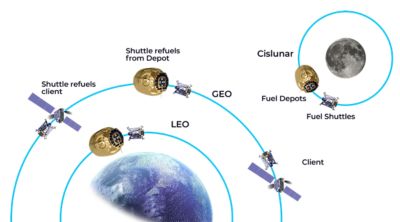
Fill ’Er Up: Getting Fuel to Spacecraft
To make this vision a reality in an efficient, cost-effective way, Orbit Fab has developed what are essentially Gas Stations in Space™. Its refueling service uses reusable fuel shuttles to ferry fuel from storage depots directly to spacecraft. Customer spacecraft will be equipped with the Rapidly Attachable Fluid Transfer Interface (RAFTI™), which can be plumbed into the existing propulsion system.
The depots have simple propulsion and avionics systems that are largely designed for station-keeping and thermal conditioning of the fuel. The fuel shuttles are fully capable spacecraft with:
- A Grappling and Resupply Interface for Products (GRIP™) active refueling component
- RAFTI, a docking and refueling interface that enables on-orbit and ground fueling operations and is compatible with many storable propellants
- An attitude determination and control system (ADCS) and propulsion system that enables six degrees of freedom
- A rendezvous proximity operation and docking (RPOD) system
The shuttles and depots are strategically positioned to take advantage of their respective orbits to create reductions in expended delta-V to reach the customer, reducing the cost of fueling.
Using its universal mission planning software (UMPIRE), Orbit Fab can optimize refueling services based on individual customer missions. With it, Orbit Fab can determine when, where, and how much fuel a customer needs to refuel. The shuttles fuel up at the depots, maneuver to the customer spacecraft, dock with it using GRIP and RAFTI, deliver the fuel, and then maneuver back to the depot.
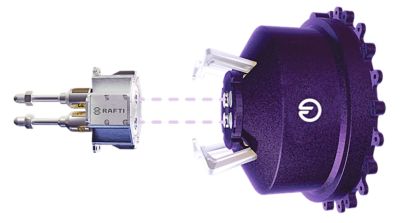
Rapidly Attachable Fluid Transfer Interface (RAFTI™, left) and Grappling and Resupply Interface for Products (GRIP™) capture mechanism (right)
Ensuring Thermal and Structural Integrity in Space
With so many variables in space and among the different systems, Orbit Fab uses simulation to test its interfaces. “Ansys really helps us do that analysis upfront to understand if our mechanism will work,” says Kevin Smith, chief engineer at Orbit Fab.
The Orbit Fab team uses Ansys Thermal Desktop thermal-centric modeling software and Ansys Mechanical structural finite element analysis (FEA) software for thermal and structural analysis of its interfaces.
“We heavily rely on Thermal Desktop software for all our product designs,” says Diarmuid Gregory, thermal engineer at Orbit Fab. “It has helped us figure out if we are going to have adverse effects when the spacecraft dock together.”
Because there is no atmosphere in space, there is no way for heat to effectively dissipate through convection. That’s why spacecraft have radiation shields that enable the heat created in flight to dissipate through radiative heat transfer. The heat created from the several motors inside GRIP has the potential to overheat, causing issues for GRIP or the customer’s RAFTI that it attaches to. To test and study this, the team created an initial model of GRIP and tested it in a thermal vacuum chamber. The team then fed that data back into Thermal Desktop software to calibrate the model with more precision. “Being able to parameterize stuff has been really helpful for trade studies and trying out different design options,” says Gregory. “We use Thermal Desktop software to iterate quickly and ensure our analysis is demonstrating what is really going to happen in orbit.”
Thermal design and analysis is only one piece of the complex puzzle. Sending anything into space produces a lot of vibrations, creating the potential for things to shake apart if not connected appropriately. The GRIP capture mechanism is bolted to the top of the fuel shuttles, so Orbit Fab uses Mechanical software to simulate optimal bolt patterns and test resonance frequencies.
“We use Ansys Mechanical software to evaluate if the bolts will lift off, if we’re using the right materials, or if we need to adjust the bolt patterns,” says Smith. “We also do vibration studies on the internals of GRIP. If this part of GRIP starts vibrating at a certain frequency and induces vibration in another part, you can get some pretty destructive forces.”
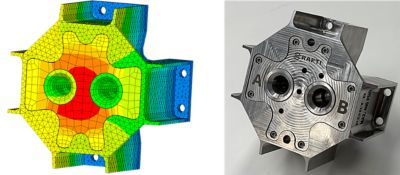
Simulation of Rapidly Attachable Fluid Transfer Interface (RAFTI™) in Ansys Thermal Desktop thermal-centric modeling software (left) and RAFTI (right)
Getting More With Your Delta-V
Missions that require frequent orbit changes need analytical models for mission planning that can be executed quickly, enabling fast iteration on plans that demand many maneuvers. To address this need, Orbit Fab developed an in-house mission architecture analysis and planning platform, UMPIRE, that integrates Ansys Systems Tool Kit (STK) digital mission engineering software to determine optimal refueling logistics to customer spacecraft at the lowest cost and impact.
“The idea is that you can input everything you want your satellite to do,” says Nate Wilson, mission analysis engineer at Orbit Fab. “Start in this orbit, transfer to this orbit, stay in this orbit for (the desired) amount of time with station-keeping, then, using UMPIRE, determine how, when, and where to refuel.”
Planning for refueling during the design phase encourages spacecraft designs that are optimized for other things instead of focusing on fuel consumption and storage. Refueling enables smaller fuel tanks, which in turn make the spacecraft lighter. Customers can use that space for different payloads or even reduce the size of the vehicle in its entirety.
“STK software helps us get very accurate fuel calculations to see exactly how much fuel we are using at each point and how much delta-V we’re spending for each maneuver,” says Wilson. “From an orbital analysis standpoint, the STK Astrogator capability is super useful for making sure we’re getting accurate ideas of fuel use during maneuver calculations.”
In addition to fuel consumption, STK software enables the Orbit Fab team to ensure that its fuel shuttles don’t uncontrollably collide with customer satellites. Using the robotics operation control (ROC) lab at Kirtland Air Force Base in New Mexico, Orbit Fab tested its RPOD platform. Using the three-degrees-of-freedom system, the team could simulate a controlled collision between the fuel shuttles and a customer spacecraft. The force of the collision wasn’t even enough to click a ballpoint pen.
“The whole point of the way people operate satellites is so that they don’t run into each other,” says Smith. “So, one of the biggest challenges we have is, how do we have a controlled collision? How do we convince people that we aren’t running spacecraft into each other? Simulation helps us do that.”
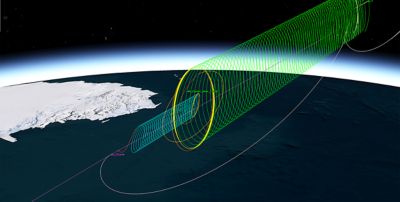
Simulation of orbital maneuvers for a fuel shuttle approaching a client spacecraft
Just for you. We have some additional resources you may enjoy.
“We use Ansys Mechanical software to evaluate if the bolts will lift off, if we’re using the right materials, or if we need to adjust the bolt patterns.”
— Kevin Smith, chief engineer, Orbit Fab
The Advantage Blog
The Ansys Advantage blog, featuring contributions from Ansys and other technology experts, keeps you updated on how Ansys simulation is powering innovation that drives human advancement.
